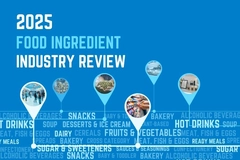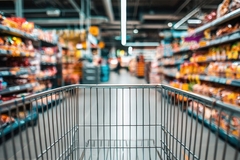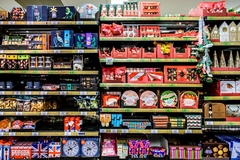
- Industry news
Industry news
- Category news
Category news
- Reports
- Key trends
- Multimedia
Multimedia
- Journal
- Events
- Suppliers
- Home
- Industry news
Industry news
- Category news
Category news
- Reports
- Key trends
- Multimedia
Multimedia
- Events
- Suppliers
Feeding emissions: Food for animal consumption constitutes majority of livestock footprint

14 Feb 2023 --- Most carbon emissions stem from the feed farm animals consume. Animal feed constitutes 78% of chickens’ carbon footprint and 69% of the salmon industry’s footprint, according to a study published in Current Biology.
Chicken is flagged as a “greener” protein than salmon. Global chicken production is 55 times greater (130.8 vs. 2.4 million metric tons of slaughter weight), yet it results in 38 times greater greenhouse gas emissions and uses ten times more space, notes the research.
Land and sea giants
Industrial production of broiler chickens and farmed salmon represent two of the largest animal-sourced food sectors in their respective realms, “offering a compelling case study of production trajectories and environmental footprints,” according to the study’s authors.

“Chicken and salmon are also similar in lean protein quality and are relatively environmentally efficient with low feed conversion ratios due to intensive selective breeding, feed specialization and improved production technologies,” they say.
In the case of salmon aquaculture, industry uses 2.3 million metric tons of crops for feed per year, mainly corn, soybean and wheat.
“In the future, pressures from feed are likely to continue to become more terrestrially based as the price of fish meal increases,” the study notes.
This creates an overlap, as both chicken and salmon industries require the same kind of feed, generating “resource competition between sectors that could have inequitable and perverse outcomes if ignored and left unregulated.”
Furthermore, 85.5% of both industries are in the same geographical areas, straining further the same feed producers.
However, advances in aquafeed manufacturing and novel circular feed ingredients might reduce the intersectoral competition.
 Atlantic salmon production has increased from 0.9 million metric tons of live weight in 2000 to 2,719.6 in 2020.Mitigation solutions
Atlantic salmon production has increased from 0.9 million metric tons of live weight in 2000 to 2,719.6 in 2020.Mitigation solutions
The authors flag that food is one of the biggest environmental pressures on the planet and that previous studies show that vegetarianism or veganism are options to reduce emissions in the diet.
Other dietary options – such as consuming food grade insects – can also reduce carbon emissions. Insects also lessen the burden of food waste, being fed with underused agri-food by-products like vegetables, fruits and starch origin, or food no longer destined for human consumption.
Moreover, farming can be made more efficient by concentrating production in “high-pressure” zones to focus all efforts on concrete areas.
More change can be driven in switching the feed for salmon as the study highlights that it is unlikely that feed for chicken will change dramatically in the next few years.
“We urge researchers, consumers and policymakers to shift the thinking around fed animal production as being not just ‘terrestrial’ and ‘aquatic’ but rather as fitting on a continuum, exhibiting both reliance and pressure on a huge number of environments and production systems,” say the study authors.
“Integrating food policy across realms and across sectors will be critical for optimizing and achieving sustainability across the global food system now and in the future.”
Chicken and salmon boom
According to the US Department of Agriculture (USDA), the global demand for poultry meat has risen from 69 million metric tons in 201 to 128 million metric tons in 2021, with global chicken consumption predicted to account for 41% of all meat-eating by the decade’s end.
“Developing and emerging markets have led most of the growth in poultry consumption over the past ten years. Consumption increased by 5% in West Africa, 4% in North Africa, 3% in Mexico and 4% in the Philippines. These annual growth rates are projected to remain near these levels over the next ten years and are expected to contribute to the largest increase in poultry import demand and trade,” explains the USDA.
To exemplify the insatiable appetite for chicken, even amid the worst avian flu in years, US citizens consumed a record 1.45 billion chicken wings during Super Bowl weekend.
According to the 2022 State of World Fisheries and Aquaculture FAO report, Atlantic salmon production has increased from 0.9 million metric tons of live weight in 2000 to 2,719.6 million metric tons in 2020. Constituting 32.6% of all aquaculture production.
Similarly, silver salmon production has also doubled in the last two decades.
By Marc Cervera










